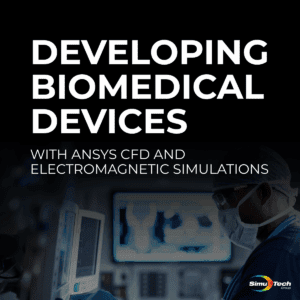Ansys HFSS & Design for Internet of Things (IOT) Devices
In this one-hour webinar, we provide an overview of the newest tools available in Ansys HFSS software for antenna simulation. You’ll learn the easiest method for completing Internet of Things (IOT) antenna design from scratch, as well as how to determine optimum antenna placement.
Design for the Internet of Things (IoT)
The Internet of Things (IOT): What Exactly Is It? It stands for a global network of physical objects that can link to one another and share data through the Internet thanks to software, sensors, and other technologies.
In addition, these physical devices are capable of easily collecting and sharing data with little assistance from humans thanks to low-cost computer capabilities. Other industry contributions include vast data capture and storage, mobile technologies, the cloud, and data analytics. Furthermore, digital systems now have the ability to track, modify, and record every interaction that takes place between linked devices. As a result, the physical and digital worlds are interacting and working together.
In the IOT, What Are Connected Devices?
Because IoT devices support both human-machine and interactions among various IoT devices, the usual structures and experiences of applications might not always be available.
We can enable them to increase communication by connecting electronic devices like computers, cellphones, tablets, TVs, appliances, or any other items that have the required connectivity and sensors to the Internet.
In addition, connecting other devices that are connected to the same network. These are Internet of Things (IoT) connected objects. For a practical example, a linked item that uses the IoT to communicate is a refrigerator that notifies a grocery store’s internet server when a customer is running low on soda.
Electronics Software for IOT (Internet of Things)
HFSS
Ansys HFSS simulates 3-D full-wave electromagnetic fields for accurate and rapid design of high-frequency and high-speed electronic components.
Maxwell
Ansys Maxwell simulates 2-D and 3-D low frequency electromagnetic fields for accurate and rapid design of electromagnetic and electromechanical devices.
Icepak
Ansys Icepak provides electronic cooling solutions that utilize the industry leading CFD solver for T&F flow analyses of integrated circuits, PCBs and electronics.
SIWave
Ansys SIwave is a specialized design platform for power integrity, signal integrity and EMI analysis of electronic packages and PCBs.
Q3D Extractor
Ansys Q3D Extractor provides 2-D and 3-D parasitic extraction for engineers designing electronic packaging and power electronics.
Electronics Desktop
Electronics Desktop is a unified platform for electromagnetic, circuit and system simulation. Free download available for students!
Nuhertz FilterSolutions
Nuhertz FilterSolutions provides automated RF, microwave and digital filter design, synthesis and optimization in an efficient, intuitive process.
Motor-CAD
Ansys Motor-CAD is a specialized electric machine design tool that allows for quick multiphysics simulation over the entire torque-speed working range.
EMA3D Cable
Delivers simulations of cloud-to-ground lightning strikes, high-intensity radiated fields & emissions, EM pulses, EMI/EMC, crosstalk and more.





